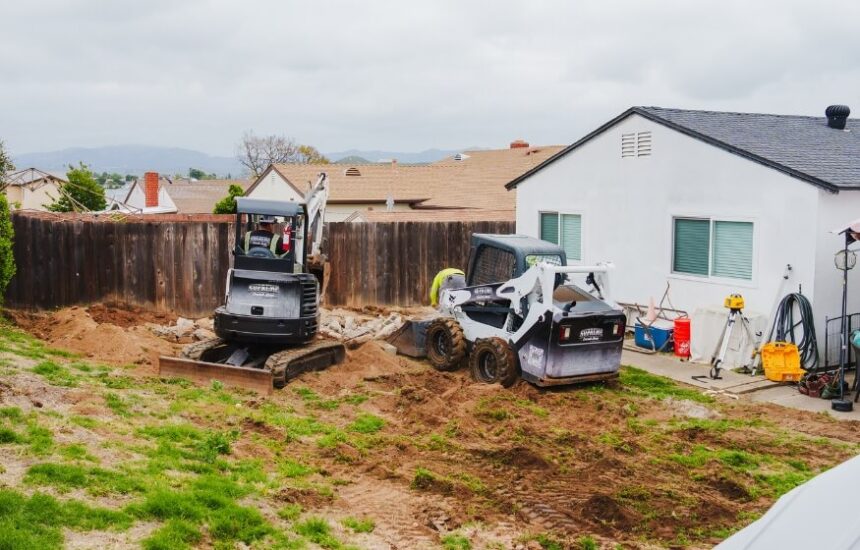Are you aware that San Diego has seen a dramatic rise in Accessory Dwelling Unit (ADU) construction, with many homeowners seeking to maximize their property’s potential? If you’re a homeowner looking to add an ADU, you’re likely grappling with complex zoning regulations, building limits, and the often daunting approval processes. This article is tailored for you, providing clarity on the challenges of navigating ADU construction in San Diego. We’ll delve into the specific zoning allowances for single-family homes, the size restrictions for detached ADUs, and the intricacies of permitting, including essential details about parking and setback requirements. Furthermore, we’ll explore the financial implications, from estimated costs to potential incentive programs that could ease your budget. By the end, you’ll have a comprehensive understanding of the regulations, equipping you to confidently embark on your ADU project and ensure its successful completion.
Zoning and Land Use Requirements
How do zoning and land use regulations impact ADU construction?
Zoning and land use regulations significantly influence the development of Accessory Dwelling Units (ADUs). In single-family zones, homeowners can typically build one ADU and one Junior Accessory Dwelling Unit (JADU), ensuring compliance with local codes.
Homeowners in single-family zones can usually construct one ADU and one JADU, following local regulations.
In multi-family zones, the number of detached ADUs allowed varies based on the existing units on the property.
- Verify setback requirements, which may include matching the primary dwelling’s front yard setback.
- Be aware that side and rear setbacks might permit zero lot line conditions in certain areas, like San Diego.
- Remember that detached ADUs can’t exceed 1,200 square feet in size.
Before commencing construction, consult local zoning codes using the County lookup tool to ensure adherence to all property regulations.
For further insights, check out our guide on navigating zoning laws effectively.
Building Size and Height Restrictions
When planning your Accessory Dwelling Unit (ADU) in San Diego, understanding the building size and height restrictions is essential.
Detached ADUs can be as large as 1,200 square feet, while attached units must stay within 50% of the primary home’s square footage or a maximum of 1,200 square feet.
Whether you’re considering a detached or attached ADU, both types have a height limit of 24 feet, ensuring they complement the neighborhood’s character and don’t overshadow the primary residence.
As you navigate these regulations, have you considered how the location of your ADU might influence its design and functionality?
Maximum ADU Dimensions
What’re the maximum dimensions for Accessory Dwelling Units in San Diego?
Understanding the size regulations for Accessory Dwelling Units (ADUs) in San Diego is essential for property owners.
Detached ADUs can be up to 1,200 square feet, while attached units are limited to 50% of the primary dwelling’s square footage, also capped at 1,200 square feet.
Height restrictions permit ADUs to rise to 30 feet.
Key points to consider include:
- Front yard setbacks must align with the primary dwelling.
- Zero lot line conditions allow construction on property lines for rear or side yards.
- ADUs under 800 square feet are exempt from lot coverage calculations.
For more detailed insights, explore our comprehensive guide on maximizing your property’s potential with ADUs.
Height Limitations Explained
What’re the height limitations for ADUs in San Diego?
When planning your Accessory Dwelling Unit (ADU) project in San Diego, it’s crucial to understand the height restrictions to ensure compliance with local regulations.
Detached ADUs generally have a maximum height of 24 feet; however, in certain multi-family zones, heights may reach up to 30 or even 40 feet. These units can be built up to two stories, but roof decks aren’t permitted.
- Remember to observe side setbacks and fire safety requirements, which typically mandate a minimum of 4 feet.
- If you’re opting for a zero lot line construction, ensure windows are at least three feet from the property line.
- For attached ADUs, the size mustn’t surpass 50% of the primary dwelling’s square footage or 1,200 square feet.
For more detailed guidance on ADU regulations, check out our comprehensive guide on zoning laws in San Diego.
Setback and Spacing Regulations
How do setback and spacing regulations impact ADUs?
Understanding setback and spacing regulations is crucial for homeowners looking to build Accessory Dwelling Units (ADUs). In San Diego, these rules dictate that detached ADUs must maintain a minimum distance of 6 feet between structures, with eave-to-eave spacing required to be at least 4 feet.
Zero lot line conditions allow for unique placement directly on property lines, though windows must remain three feet from the edge to ensure privacy.
- ADUs under 800 square feet can be constructed within the front setback.
- Align setbacks with the primary dwelling’s front and exterior side yard requirements.
- Consider local code stipulations to avoid compliance issues.
For further insights on maximizing your ADU’s potential, check out our guide on optimizing small living spaces.
Permitting and Approval Process
Successfully handling the permitting and approval process for your ADU in San Diego requires a detailed application and adherence to local regulations.
But what specific requirements should you be aware of when dealing with special zones or historical areas?
Understanding these nuances can greatly impact your project’s timeline and compliance.
Necessary Permit Documents
What essential documents are needed for an ADU permit in San Diego?
Navigating the ADU permit process in San Diego requires several crucial documents to ensure compliance with local regulations.
Start by submitting a building permit application alongside detailed architectural plans that align with local building codes. If your ADU falls under a coastal overlay zone, additional requirements from municipal guidelines and the California Coastal Commission will apply.
- Ensure your submission meets zoning laws and setback requirements.
- Include energy compliance forms to satisfy Title 24 standards.
- Be prepared for inspections during construction to verify adherence to approved plans.
Completing this documentation is vital for a smooth approval process.
For more detailed procedures, see our guide on the ADU permitting process.
Approval Timeline Factors
What Factors Affect the Approval Timeline for ADU Permits in San Diego?
The approval timeline for ADU permits in San Diego can be influenced by various elements, despite the intended efficiency of the process.
Complexity of the project, zoning laws, and building codes play significant roles. Homeowners must submit a comprehensive building permit application, and plan checks by local authorities may necessitate revisions, extending the timeline.
- Ensure compliance with zoning regulations.
- Prepare detailed building plans to avoid delays.
- Anticipate additional permits, such as for electrical or plumbing work.
By staying proactive and thorough during the initial stages, you can streamline the approval process.
For more information on navigating the permit process, see our guide on ADU regulations in California.
Permit Submission Requirements
How do you navigate the permit submission requirements for ADUs in San Diego?
Navigating the permit submission process for Accessory Dwelling Units (ADUs) in San Diego involves several critical steps.
Start by submitting a building permit application in person, as digital submissions aren’t accepted. Ensure your application includes comprehensive site plans and architectural drawings that adhere to local zoning and building codes.
- Include Title 24 energy compliance forms to meet California’s efficiency standards.
- Schedule inspections during key construction phases to maintain safety and adherence to approved plans.
- If applicable, consider obtaining Coastal Development Permits, especially in coastal areas like Rancho Santa Fe.
For a more in-depth understanding, see our guide on local zoning regulations.
Parking and Access Considerations
What’re the key parking requirements for an Accessory Dwelling Unit (ADU) in San Diego?
When considering the construction of an Accessory Dwelling Unit (ADU) in San Diego, it’s important to be aware of the parking regulations that can affect your project. Understanding these requirements can enhance both compliance and convenience.
Notably, if your ADU is situated within half a mile of public transit, you won’t need to provide any parking. Additionally, converting an existing primary residence into an ADU waives parking requirements entirely, which can be advantageous in areas lacking off-street parking options.
- If your ADU is near public transit, no parking is necessary.
- Converting a primary residence eliminates parking demands.
- By January 2025, garage or carport conversions will also not require replacement parking.
For more detailed insights on ADU regulations, check out our comprehensive guide on building codes and permits.
Conversion and Usage Limitations
How can property owners maximize their space with ADUs?
Transforming existing structures into Accessory Dwelling Units (ADUs) is a fantastic way for property owners to enhance their property’s utility. In San Diego, regulations permit the conversion of spaces, such as garages, into livable units.
For single-family homes, you can create one detached ADU and one Junior Accessory Dwelling Unit (JADU), with JADUs limited to 500 square feet. Multifamily properties are even more flexible, allowing for up to 25% of existing units to be converted and up to eight standalone ADUs.
- Ensure at least one ADU conversion is permitted.
- Remember, JADUs can’t exceed 500 square feet.
- Detached ADUs must be standalone; no stacking allowed.
For more information on the specific requirements for your property, check out our detailed guide on ADU regulations.
Cost and Financial Implications
How can homeowners manage the costs of ADUs effectively?
Understanding the financial implications of constructing Accessory Dwelling Units (ADUs) is crucial for homeowners. In San Diego, costs typically range from $300,000 to over $450,000, influenced by factors such as size, design, and site conditions.
Homeowners should be aware that while impact fees are often waived for smaller units, other expenses like permitting fees and construction costs can accumulate quickly.
- Consider utilizing the San Diego Housing Commission’s ADU Bonus Program for financial incentives.
- Budget for one-time sewer, water, and school fees that may apply to larger units.
- Explore potential waivers or reductions for certain fees based on the ADU’s size.
Planning and budgeting wisely can help navigate these financial challenges. For more detailed strategies on financing your ADU project, see our guide on budgeting for home renovations.
Frequently Asked Questions
What Are the New Rules for ADU in California?
FAQ
Q: How many ADUs can I build on my property in California? A: You can now construct up to eight detached accessory dwelling units (ADUs) on multifamily properties in California.
Q: What do I need to know about ADU building codes? A: Stay informed about California’s ADU building codes, which include zoning laws, permitting processes, and design guidelines.
Q: Are there any environmental concerns with building ADUs? A: Yes, consider the environmental impact of your ADU project, including land use and local ecosystems, as part of California’s regulations.
Q: How do ADUs affect property value? A: Building accessory dwelling units can potentially increase your property’s value and appeal in California’s competitive real estate market.
Q: What permits are required for ADUs in California? A: You’ll need to navigate the permitting process for ADUs, which varies by locality within California, so check with your local planning department.
Q: How does homeowner insurance change when adding an ADU? A: Adding an ADU may require adjustments to your homeowner insurance policy, so consult your insurance provider for coverage options.
What Is One Drawback of an ADU?
FAQ
Q: What is a major disadvantage of building an ADU? A: One major disadvantage of an ADU is the high construction costs, which can range from $300,000 to $450,000.
Q: Are there zoning issues with ADUs? A: Yes, building an ADU often involves navigating zoning restrictions that can complicate the construction process.
Q: How do design limitations affect ADUs? A: Design limitations can restrict creativity and functionality, impacting the overall utility of an ADU.
Q: What financial challenges come with an ADU? A: Financing an ADU can be tricky due to potential zoning issues and construction costs that may exceed budgets.
Q: Can an ADU impact property value? A: Yes, the presence of an ADU may influence resale value, depending on local market conditions and neighborhood responses.
What Is the Free ADU Grant in San Diego County?
FAQ
What is the Free ADU Grant in San Diego County? The Free ADU Grant in San Diego County provides homeowners with funding to help build an Accessory Dwelling Unit, potentially offering up to $50,000.
Who is eligible for the Free ADU Grant in San Diego? Eligibility for the Free ADU Grant requires homeowners to live on-site and meet specific application criteria set by the program.
How much funding can I receive from the Free ADU Grant? Homeowners can receive up to $50,000 in free funding through the Free ADU Grant in San Diego County to assist with construction costs.
What are the benefits of the Free ADU Grant? The Free ADU Grant can increase a property’s value while providing homeowners financial support for building an Accessory Dwelling Unit.
Are there any limitations to the Free ADU Grant in San Diego? Yes, there are limitations associated with the Free ADU Grant, including eligibility requirements and funding caps that homeowners should consider.
What Is the New ADU Law in California 2025?
FAQ
What is California’s 2025 ADU law? California’s 2025 ADU law allows homeowners to build up to eight detached accessory dwelling units (ADUs) on multifamily properties, streamlining the construction process.
How does the new ADU law impact permits? The 2025 ADU law in California simplifies the permit process for accessory dwelling units, making it easier for homeowners to get approvals.
What are the benefits of the California ADU law? The California 2025 ADU law reduces fees and increases zoning flexibility, promoting affordable housing and sustainable living options for residents.
Can I build multiple ADUs under California’s new law? Yes, according to California’s 2025 ADU law, property owners can construct up to eight detached ADUs on multifamily properties.
Are there financing options available for ADUs in California? The new ADU law encourages financing opportunities for accessory dwelling units, making it more accessible for homeowners to invest in ADU construction.
How does the 2025 ADU law support sustainability? California’s 2025 ADU law promotes environmentally friendly practices by encouraging the development of compact and efficient living spaces through ADUs.
Conclusion
In summary, understanding ADU construction regulations in San Diego is vital for successfully realizing your backyard vision. By applying the insights from this article, you can navigate the complexities of zoning, building, and permitting, ultimately creating a space that complements your lifestyle and adheres to local guidelines. Embracing these strategies not only enhances your property but also fosters a sense of community integration. For more tips on maximizing your ADU project and ensuring compliance, consider exploring additional resources or guides that can help you take the first steps toward your dream addition.


